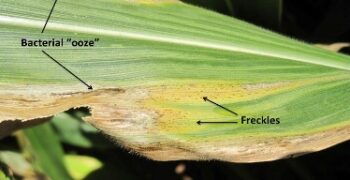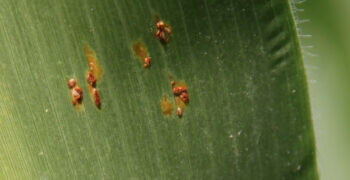Background:
Wireworms are click beetle larvae commonly found in soil, where they feed on plant roots, seeds and underground stems of various crops and plants. The larvae are slender, cylindrical and usually yellow or brown in color, with a hard exoskeleton. Click beetles are long, narrow and rounded at each end. They can be brown, black or gray.
Life Cycle:
Wireworms undergo several stages of development: egg, larva (wireworm), pupa, and adult (click beetle). The larval stage is the longest, lasting several years depending on environmental conditions.
Damage:
Wireworms can be significant pests, causing damage to a wide range of crops but particularly corn in our region. Their feeding activity can result in reduced plant vigor, stunted growth, and in severe cases, crop failure.
Control:
Managing wireworms can be challenging. Cultural practices like crop rotation and fallow periods can help reduce populations. Biological controls, such as nematodes that parasitize wireworms, are also used. Chemical treatments may be necessary in severe infestations, although this approach is becoming less favored due to environmental concerns.
Identification:
Wireworms are distinguished by their slender, segmented bodies and hard exoskeletons. They move slowly through the soil, feeding on plant material below ground level.
Ecological Role:
While considered pests in agriculture, wireworms play a role in soil ecology by breaking down organic matter and contributing to nutrient cycling.
Research and Monitoring:
Ongoing research aims to develop more sustainable methods for wireworm control, as their resilience and long life cycles make them difficult to manage with conventional means.



